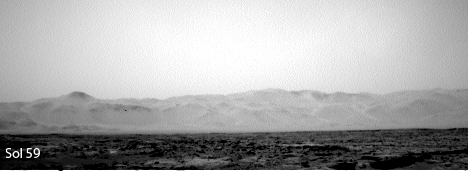The legendary British rock band has been honored by NASA with a rock that the InSight lander rocket-blasted across the Red Planet’s surface last year.

Those of you who frequently read my articles will know that I have a fascination with rolling rocks on celestial bodies. There’s the numerous boulders on the Moon that have been dislodged and rolled down crater sides, leaving their bouncy imprints in the dirt. There’s also the rolling rocks of Ceres. And the theorized rock tracks that are carved into Phobos. Then there’s Mars, the undisputed king of rolling boulders, imaged to beautiful precision by our orbiting armada of spacecraft.
The most famous rolling rock is no boulder, however; it’s barely larger than a golf ball—but it’s now the most famous pebble in the solar system. It’s a little rock that was minding its own business until a car-sized NASA robot rumbled through the Martian skies on Nov. 26, 2018, retro-rockets firing to slow its descent to the ground, that flipped the innocent ruddy bystander three feet (1 meter) from the landing site. It’s sobering to think that that rock probably hasn’t been disturbed for millions of years until that fateful day.
Behold, the “Rolling Stones Rock,” named after rock legends The Rolling Stones and announced tonight by Avengers actor Robert Downey Jr. to tens of thousands of Stones fans at the Rose Bowl Stadium, just before Mick Jagger, Keith Richards, Charlie Watts, Ronnie Wood, and friends rocked Los Angeles to its core. Space exploration doesn’t get much more Hollywood than this:
And a little animated introduction to the rock itself:
“The name Rolling Stones Rock is a perfect fit,” said Lori Glaze, director of NASA’s Planetary Science Division in Washington, in a statement. “Part of NASA’s charter is to share our work with different audiences. When we found out the Stones would be in Pasadena, honoring them seemed like a fun way to reach fans all over the world.”
While, in the grand scheme of things, naming a little rock after The Rolling Stones may not seem like such a big deal (and, besides, it’s an unofficial designation), as my wife and I stood watching the Stones do a blistering performance of “Sympathy For the Devil”, the family next to us were discussing Mars asking what the InSight lander was doing on the Red Planet.
So, mission success, NASA. Mission success.
“Cross-pollinating science and a legendary rock band is always a good thing…”
Robert Downey Jr.









